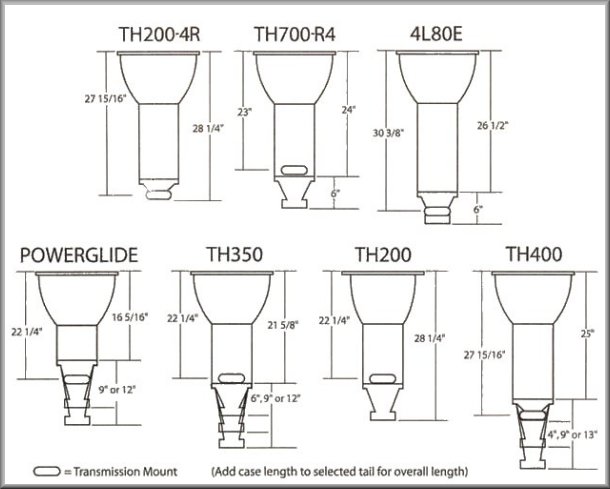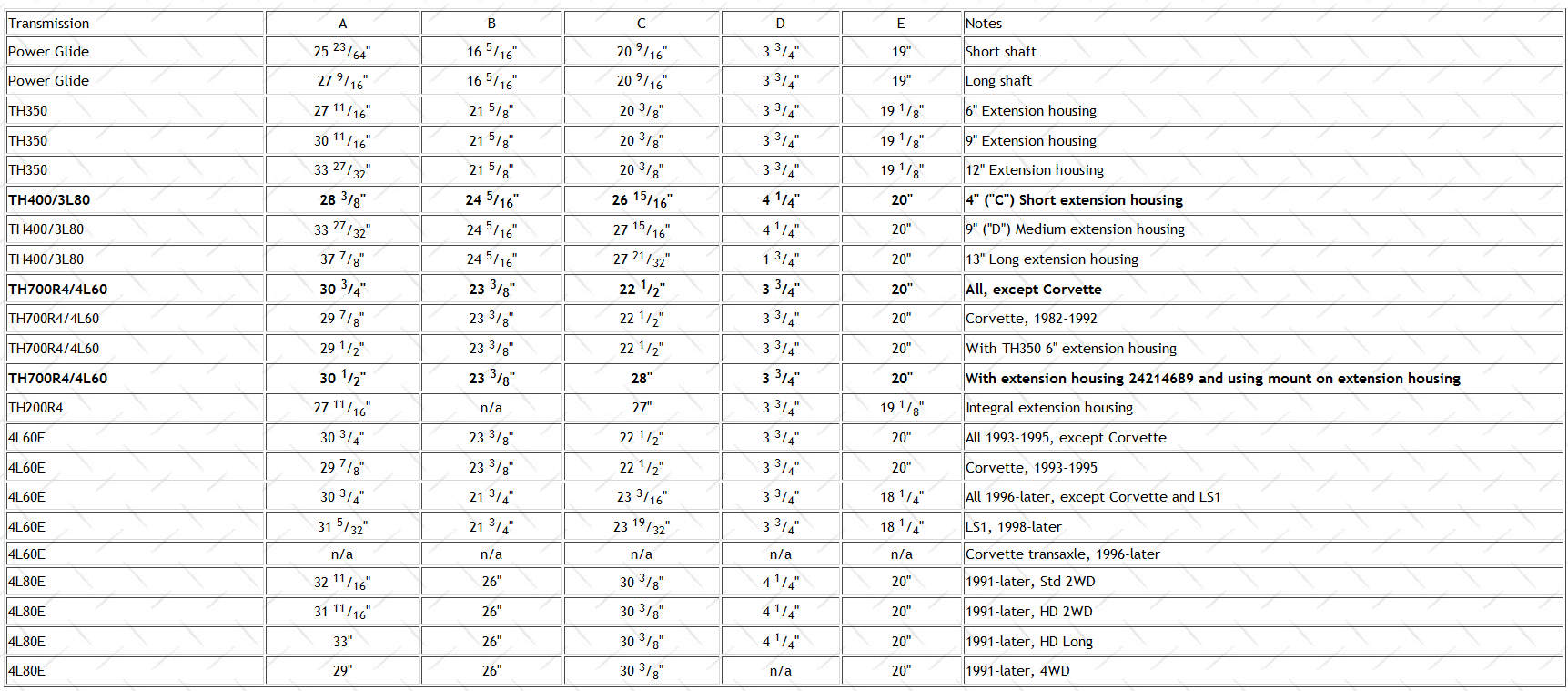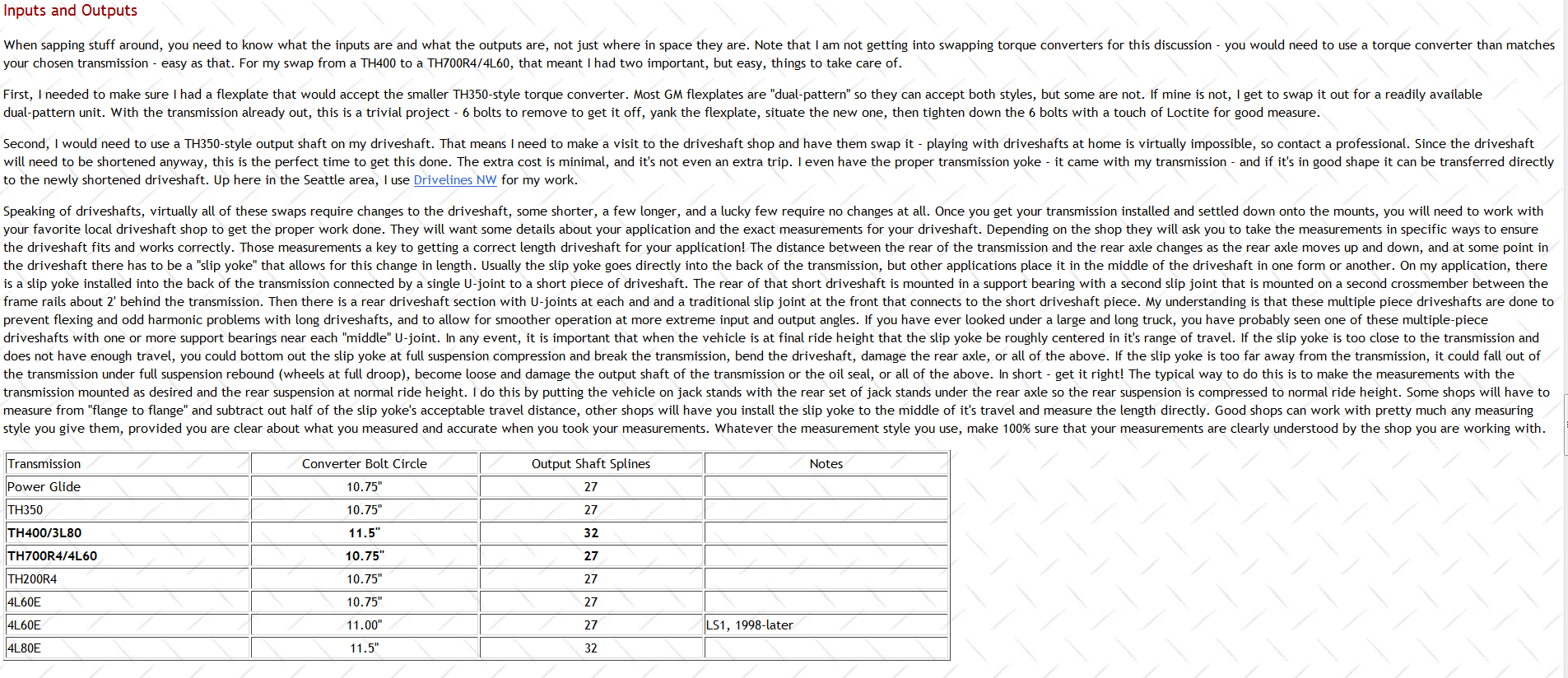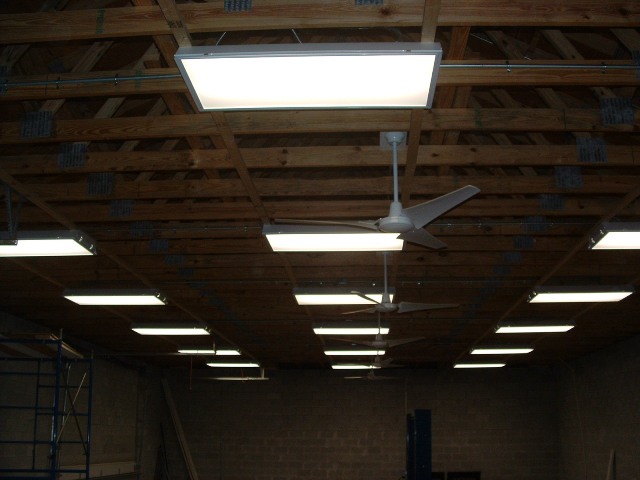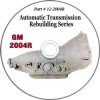please take a great deal of pictures, and let us know all you can during the transmission rebuild and upgrade, listing tools and parts used would be great, as far fewer guys know how to rebuild a 200r4 than know how to work on a first generation chevy V8.
keep in mind the transmission shift points and converter, stall speed, you want the converter stall to allow near instant access to the upper torque curve under full throttle, but you don,t want the engine needing to reve much above 4000rpm under light loads and part throttle, in an ideal world youll have a shift kit, and converter stall speed matched in that transmission, so under light throttle the engine rpms stay reasonably low and the trans shifts at lets say, 4200rpm, to the next higher gear, but under full throttle , the trans should shift several hundred rpm past peak horse power in the rpm range
http://www.autorepairmanuals.biz/site/5 ... 83-2004RTM
http://www.msgpio.com/manuals/mshift/V41tune.html
http://www.auto-repair-manuals.com/GM-T ... anual.html
http://garage.grumpysperformance.co...g-a-performance-transmission.7082/#post-40015
http://www.tciauto.com/tc/trans-dim/
http://www.monstertransmission.com/GM-Transmissions_c_4314.html
http://2004r.net/
http://web.archive.org/web/200701300142 ... rebld.html
http://web.archive.org/web/200701281733 ... 2004r.html
http://web.archive.org/web/200701251259 ... tches.html
http://web.archive.org/web/200704201144 ... enoid.html
200r4 trans codes
1984 - 4CQ
1985 - 5CQ
1986 - 6CZ
1987 - 7CZ
1988 - 8CZ
http://www.makcotransmissionparts.com/200-4r.html
List of GM transmissions
From Wikipedia, the free encyclopedia
Jump to navigationJump to search
General Motors is an innovator of
automatic transmissions, introducing the
Hydra-Matic in 1940.
[1] This list includes some GM
transmissions.
Contents
Automatic transmissions[edit]
Early models[edit]
The GM Hydra-Matic was a success and installed in the majority of GM models by 1950. Through the 1950s, all makers were working on their own automatic transmission, with four more developed inside GM alone. All of GM's early automatic transmissions were replaced by variants of the
Turbo-Hydramatic by the 1970s.
- 1940–1967 Hydra-Matic — Oldsmobile (now the trade name for all GM automatic transmissions)
- 1948–1963 Dynaflow — Buick
- 1950–1973 Powerglide — Chevrolet (also used by Pontiac, Holden, Vauxhall and Opel)
- 1968-1971 Torquedrive- Chevrolet ( Camaro and Chevy II, Nova. Manually shifted on Column. )
- 1957–1961 Turboglide — Chevrolet (V8 models only, except Corvette)
- 1958–1959 Flightpitch — Buick
- 1961–1963 Dual Path Turbine Drive — Buick
- 1961–1964 Roto Hydramatic — Oldsmobile/Pontiac (also used by Holden)
- 1964–1969 Super Turbine 300 — Buick/Oldsmobile/Pontiac (Oldsmobile Jetaway)
- 1968–1969 Torquedrive — Chevrolet (manually column shifted 2 speed automatic, 6 cyl only)
- 1956-1964 4 speed Controlled coupling HydraMatic, also known as Cadillac 315 or P 315 HydraMatic, Oldsmobile Jetaway, Pontiac Super HydraMatic.
- TempestTorque, ( Pontiac) a two speed based on Powerglide, but having the added feature of " Split Torque " dividing the engine power between mechanical connection and the torque converter in high gear.
Turbo-Hydramatic[edit]
The
Turbo-Hydramatic was used by all GM divisions, and formed the basis for the company's modern
Hydramatic line. The basic
rear-wheel drive Turbo-Hydramatic spawned two
front-wheel drive variants, the
transverse Turbo-Hydramatic 125, and the
longitudinal Turbo-Hydramatic 425. A third variant was the light-duty rear wheel drive
Turbo-Hydramatic 180 used in many European models.
Heavy-duty rear wheel drive
- 1971–1994 3L80HD (heavy duty version of TH400)
Medium-duty rear wheel drive
Light-duty rear wheel drive
- 1969–1998 TH180/TH180C/3L30 — 3-speed European/Asian model. Also manufactured and used by Holden as the Trimatic transmission.
Transverse front wheel drive
Longitudinal front wheel drive
Electronic Hydra-Matics[edit]
The next-generation transmissions, introduced in the early 1990s, were the electronic
Hydra-Matics based on the
Turbo-Hydramatic design. Most early electronic transmissions use the "-E" designator to differentiate them from their non-electronic cousins, but this has been dropped on transmissions with no mechanical version like the new
GM 6L80 transmission.
Today, GM uses a simple naming scheme for their transmissions, with the "Hydra-Matic" name used on most automatics across all divisions.
3/4/5/6 L/T ## -Elll
Number of forward gears L=Longitudinal
T=Transverse
GVWR rating "E" for Electronic
"HD" for Heavy Duty
First-generation longitudinal (Rear Wheel drive)
- 1991–2001 4L30-E — 4-speed light-duty (used in BMW, Cadillac, Isuzu, and Opel cars)
- 1992– 4L60-E/4L65-E — 4-speed medium-duty (used in GM trucks and rear-wheel-drive cars)
- 1991– 4L80-E/4L85-E — 4-speed heavy-duty (used in GM trucks)
First-generation transverse (Front Wheel drive)
- 1995–2010 4T40-E/4T45-E — 4-speed light-duty (used in smaller front wheel drive GM vehicles)
- 1991–2010 4T60-E/4T65-E/4T65E-HD — 4-speed medium-duty (used in larger front wheel drive GM vehicles)
- 1993–2010 4T80-E — 4-speed heavy-duty (used in large front wheel drive GM vehicles, only with Cadillac NorthStar V8.
Second-generation longitudinal (Rear Wheel drive)
*This transmission is part of a joint-venture between
General Motors and
Ford Motor Company to split development of two transmissions, a longitudinal 10-speed and transverse 9-speed. Ford led the design of the 10-speed transmission, as well as filing the design patents for said transmission. According to an official report by the
SAE (Society of Automotive Engineers) the design of the 10-speed gearbox is essentially all Ford, while GM was responsible for designing the 9-speed 9T transverse automatic gearbox. As part of their joint-venture, Ford will let GM use the 10-speed transmission with rights to modify and manufacture it for their own applications. In-exchange for Ford's 10-speed transmission, General Motors will let Ford use its 9-speed transmission for front-wheel drive applications; Ford ultimately declined use of the 9T.
[2] [3][4]
Second-generation transverse (Front Wheel drive)
Hybrid and PHEV[edit]
Other automatics[edit]
Future[edit]
Manual transmissions[edit]
Longitudinal transmissions[edit]
Transverse Transmissions[edit]
- F23 — 5-speed transverse manual manufactured by Getrag
- F35 — 5-speed transverse manual manufactured by Saab in Gothenburg, Sweden
- F40 — 6-speed transverse manual manufactured by FGP Germany
- Getrag 282 — 5-speed transverse manual designed by Getrag and manufactured by Muncie Getrag
- Getrag 284 — 5-speed transverse manual designed by Getrag and manufactured by Muncie Getrag
- MP2/MP3 — 5-speed manual developed by Saturn for use in the S-Series from 1991-2002
See also[edit]
References[edit]
- ^ "Hydra-Matic History: The First Automatic Transmission". Ate Up With Motor. 2010-05-29. Retrieved 2014-01-15.
- ^ "Exclusive: An Inside Look At Ford's New 10 Speed Transmission". http://www.thetruthaboutcars.com/. Retrieved 2015-03-16. External link in |publisher= (help)
- ^ Brooke, Lindsay. "Ford and GM finally consummate 9- and 10-speed joint development". articles.sae. SAE International. Retrieved 20 March 2016.
- ^ "Ford passes on GM's 9-speed automatic transmission". Retrieved 2018-11-12.
- ^ Panait, Mircea. "GM Hydra-Matic 9T50 Transmission Confirmed for Chevrolet Cruze, Malibu, Equinox". autoevolution. Retrieved 2016-12-07.
- ^ "GM Service Insights, pg 23" (PDF). Archived from the original (PDF) on 2019-01-09. Retrieved 2019-07-16.
- ^ "GM Service Insights, pg 23" (PDF). Archived from the original (PDF) on 2019-01-09. Retrieved 2019-07-16.






